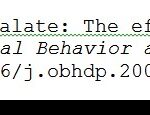The Form I-20, officially titled “Certificate of Eligibility for Nonimmigrant Student Status,” is a crucial document for all F and M students studying in the United States. This document is issued to international students by a Designated School Official (DSO) at a Student and Exchange Visitor Program (SEVP)-certified school after acceptance into the program. It’s also required for any eligible dependents accompanying the student to the U.S.
The type of Form I-20 issued (e.g., for academic, language, or vocational students) determines the specific student visa the student can obtain from the U.S. Department of State and the status they must maintain while in the U.S. Both the student and the DSO must sign the Form I-20. If the student is under 18, a parent or guardian must sign it.
The Form I-20 serves several important purposes throughout an international student’s academic journey in the United States.
Key Uses of the Form I-20
The Form I-20 is essential for various stages of an international student’s stay in the U.S. It is a document that you should keep safe and accessible.
Paying the I-901 SEVIS Fee
Before paying the I-901 Student and Exchange Visitor Information System (SEVIS) Fee, students must receive their Form I-20 from their DSO. Information from the Form I-20 is required to complete the I-901 SEVIS Fee payment. This fee is mandatory for all F and M students and must be paid before entering the United States.
To pay the I-901 SEVIS fee, prospective F and M students will need to provide the following information:
- Full name, current address, date of birth, and valid email address
- Country of birth and country of citizenship
- School Code as listed on the Form I-20 “Certificate of Eligibility for Nonimmigrant Student Status.”
- SEVIS Identification Number as listed on the Form I-20.
Applying for a Nonimmigrant Visa
The Form I-20 includes the student’s program start date, allowing entry into the United States up to 30 days prior. F-1 and M-1 student visas can be issued up to 365 days before the course of study begins. The student visa type must match the Form I-20 type (F-1 or M-1). The original Form I-20 is expected at the visa interview. In some limited cases, a consular officer might accept a copy for visa issuance before the original is received.
A student visa, an essential part of studying abroad.
Entering the United States
The signed Form I-20 should be readily available when entering the United States, not packed away. A U.S. Customs and Border Protection officer will request it at the port of entry. Students can arrive up to 30 days before the program start date listed on their Form I-20.
Changing Status to F or M Within the United States
If already in the U.S. under a different nonimmigrant status, a Form I-20 is needed when applying to USCIS to change to F or M status.
Applying for Benefits
The Form I-20 serves as proof of legal enrollment in a U.S. program of study. It may be required when applying for benefits available to F and M students, such as a driver’s license or a Social Security number.
Circumstances Requiring a New Form I-20
While the initial Form I-20 is received upon program acceptance, a new Form I-20 may be issued by the DSO in several situations:
- If the original physical copy of the form is lost, stolen, or damaged.
- For travel endorsement purposes.
- When the student’s SEVIS status changes (e.g., from Initial to Active).
- For any significant change to the student’s information, including personal details, program of study, or Optional Practical Training (OPT).
The Redesigned Form I-20
Since July 1, 2016, a redesigned Form I-20 has been mandatory for all F and M nonimmigrant visa applications, U.S. entry, travel, and applications for nonimmigrant benefits. The previous version of the Form I-20 (with a barcode) is no longer valid. DSOs were responsible for providing updated, hard copies of the Form I-20 with original signatures to all F-1 and M-1 students.
In summary, the Form I-20 is a vital document for international students in the United States, facilitating visa applications, entry into the country, and access to various benefits. Understanding its purpose and uses is crucial for a successful academic experience.
